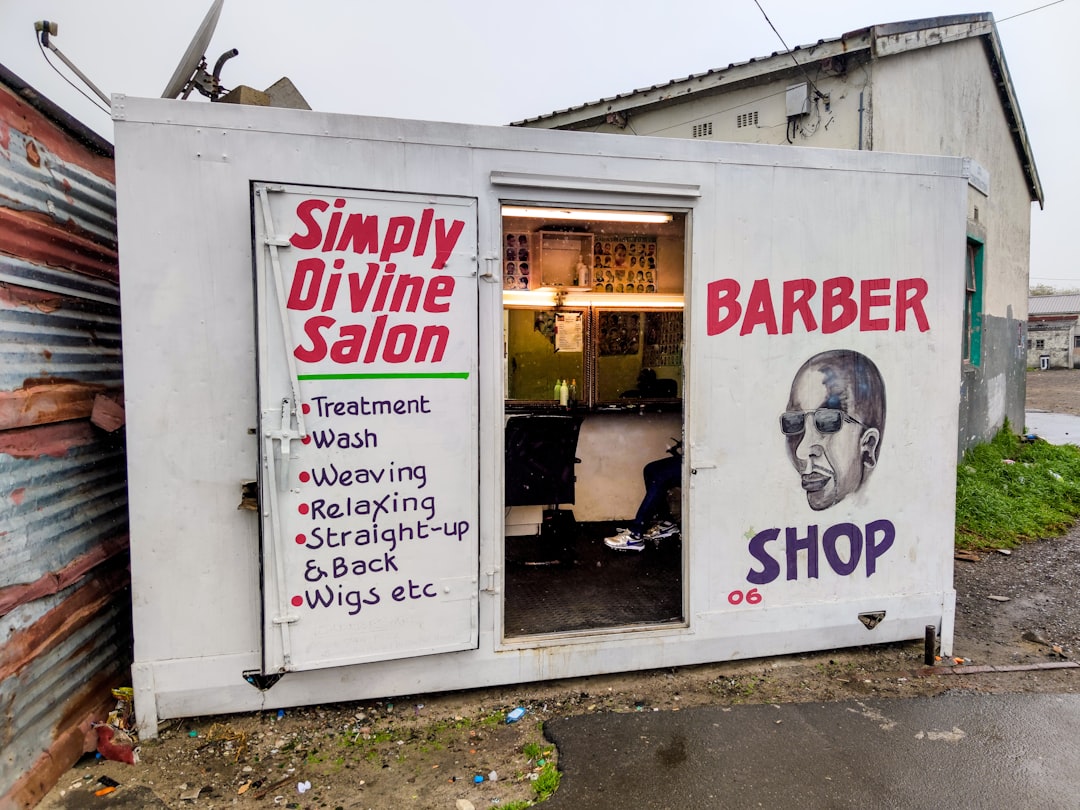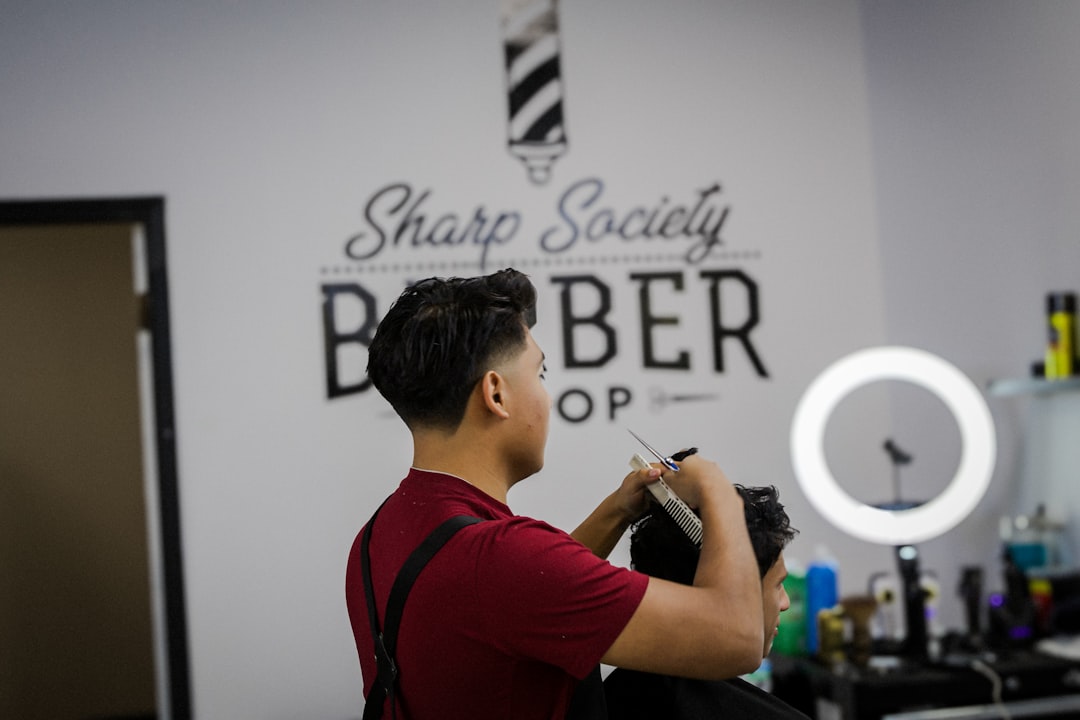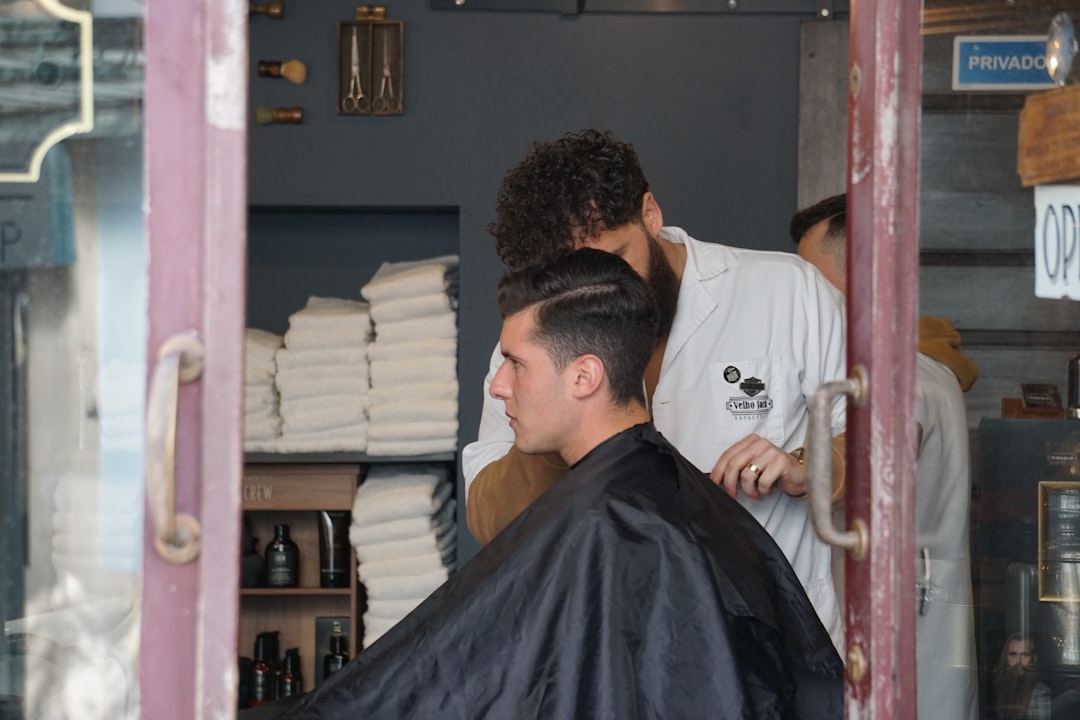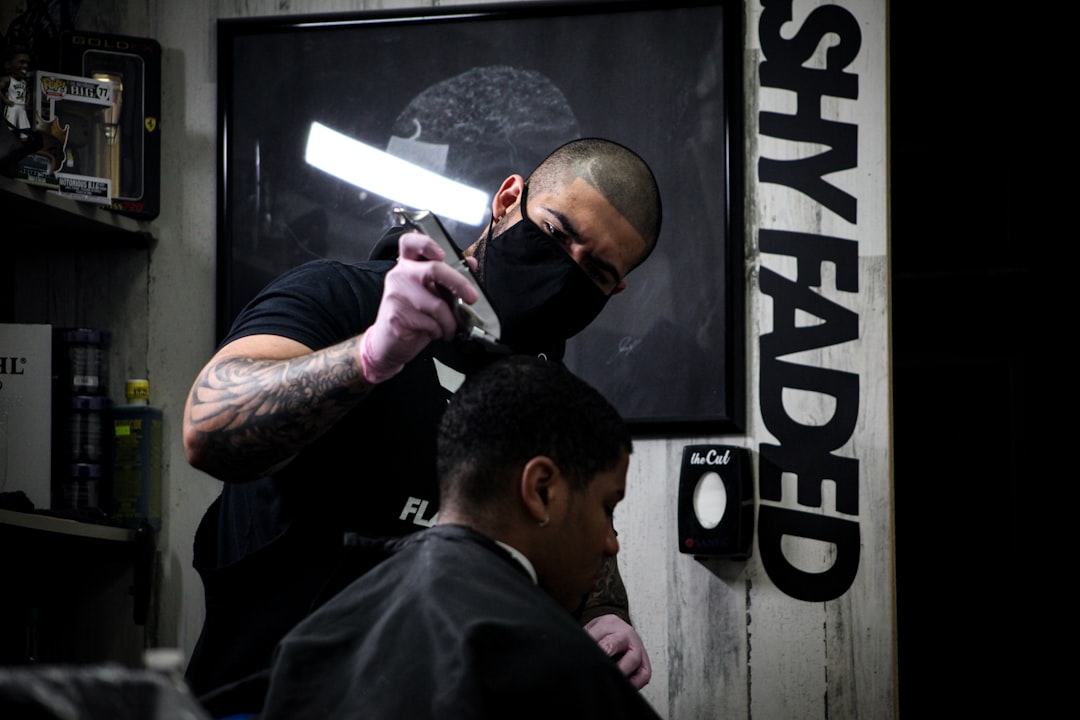

Engage prospects with a scan and streamline customer engagement with FREE QR code marketing tools by Sona – no strings attached!
Create a Free QR CodeFree consultation

No commitment

Engage prospects with a scan and streamline customer engagement with FREE QR code marketing tools by Sona – no strings attached!
Create a Free QR CodeFree consultation

No commitment
QR codes have become a strategic asset in today's digital landscape, efficiently connecting offline engagement with online actions. For barber schools, QR codes provide a modern solution to persistent industry challenges: boosting student retention, simplifying campus processes, and bridging the gap between offline prospects and essential resources without cumbersome apps or onboarding. Learn more about QR codes in marketing.
Barber schools face growing competition, rising tuition demands, and the pressure to differentiate through exceptional student experiences. Disjointed offline channels and manual processes often translate to missed opportunities, leaving students waiting for information, reliant on static print materials, or frustrated with tedious sign-up procedures—which results in lost engagement and untracked leads.
Embedding QR codes into campus and print assets allows barber schools to replace outdated workflows with seamless access to digital content, timely enrollment details, and personalized follow-ups. This guide explores how strategically using QR codes solves common challenges like missed student tracking, slow response times, and inconsistent outreach, leading to improved enrollment, retention, and overall student outcomes. Upgrade common print assets to drive measurable actions.

Barber schools often lose students between interest and enrollment because information is fragmented across paper forms, hallway flyers, and manual processes. Orientation schedules sit on bulletin boards, financial aid is handled with paper checklists, and event attendance is captured on clipboards. These analog touchpoints are slow, hard to track, and nearly impossible to connect to timely follow-up. QR codes convert these friction points into fast, digital interactions that can be tracked and acted upon in real time. See how this works in QR codes in education.
Start by replacing manual sign-ins, paper surveys, and static brochures with QR-enabled alternatives that feed data directly into your CRM or student information system. When a prospective student scans a code on a campus tour handout to join a program preview list, they can be tagged immediately, receive an automated welcome series, and be prompted to book a conversation with admissions. When a current student scans a code on the classroom door to view tutoring hours, that signal can trigger proactive outreach if the student is scanning multiple support resources. The outcome is a schoolwide feedback loop where interest signals never disappear.
By addressing untracked interest and delayed engagement with real-time interventions, barber schools create a smoother experience and measurable retention gains. The shift is practical and immediate: fewer paper bottlenecks, faster student responses, and a connected journey that supports each learner from the first scan through graduation.

Barber education is hands-on, yet most discovery and decision moments still happen in print or in person. Prospective students pick up brochures at community job fairs, families read mailers at kitchen tables, and current students see notices on bulletin boards. Without a direct onramp to digital actions, these moments fade instead of converting into applications, appointments, or support requests. QR codes solve that by turning every physical surface into a trackable gateway.
They also reduce the need for custom apps or complex portals. A well-placed QR code lets someone jump straight to a mobile-optimized tuition calculator, a program overview playlist, or a scholarship eligibility screener. With dynamic QR technology, you can update destinations without reprinting materials, which keeps all content fresh even as deadlines or course catalogs change.
Integrating QR codes at high-value touchpoints gives admission and retention teams the visibility, speed, and control typically reserved for digital-only channels. It also aligns the campus experience with student expectations: instant access, mobile-first information, and responsive follow-up.

Barber schools benefit from a mix of QR code formats tuned to common student interactions. Some links serve broad awareness and exploration; others trigger direct actions like booking or applying. Choosing the right format ensures every scan advances a specific objective.
Static codes are useful for evergreen resources like a program overview PDF. Dynamic codes are ideal for campaigns, events, and any placement where you want analytics, retargeting, or destination updates. With Sona QR, both static and dynamic formats are easy to generate and manage in one platform.
Dynamic QR codes give administrators the control to update content quickly so that printed materials continue to be accurate. That flexibility is invaluable during peak recruitment and enrollment cycles when details change frequently.

To capture and convert more student interest, meet your audience where they already are: at events, in classrooms, and around the community. Strategic QR placements both simplify the student experience and give your team the data needed to personalize outreach.
Think of each physical surface as a potential entry point into a digital journey. When someone scans a code at a campus open house, you can tag the scan to that event, enroll the contact in a relevant nurture sequence, and trigger reminders to complete an application. The same logic applies to direct mail, classroom posters, and local partnerships.
Identifying and optimizing these touchpoints will lift inquiry capture and shorten the time from first interest to enrolled student. Over time, you will build a robust dataset that shows exactly where to invest for the strongest outcomes.

Each scan is a signal of intent. When you capture those signals and connect them to next actions, you can guide prospects and students smoothly across every stage of the journey. Start with use cases that unlock immediate value for enrollment, student success, and operations, then expand as your analytics mature.
Embed QR codes into materials students already interact with: brochures, classroom signage, tool kits, and event collateral. Align the destination with a single, clear action so scanners know exactly what value they will get in return.
These use cases do more than modernize processes. They connect behaviors to outcomes that matter: applications submitted, aid packages completed, attendance stabilized, and graduates placed into jobs.
Every QR scan can be transformed into a segment that fuels personalized campaigns. With the right setup, you can distinguish between a prospect who scans a code at a job fair, a parent who scans a scholarship flyer at home, and a current student who scans an advising poster outside a classroom. Each context suggests different needs and opens the door for relevant messaging.
Use dedicated codes for each journey stage and channel so that you can build precise audiences over time. Sona QR makes it easy to tag scans by placement, time, and device type, then sync those signals into your CRM or ad platforms to power follow-up via the retargeting playbook.
By turning scans into segments, you can replace generic follow-ups with timely, relevant messages that raise response rates and keep students moving forward.
A unified QR code strategy connects offline discovery to digital conversion across every channel. Rather than treating print, events, social, and video as separate silos, QR codes tie them together with a consistent tracking and follow-up framework. This protects your budget from waste and ensures your best messages reach the right audience at the right time.
Centralize code management and analytics in one platform like Sona QR to see how each channel contributes. Then use Sona.com to attribute outcomes across touches, from a first scan on a direct mailer to a final scan that schedules an advising appointment.
QR codes are not just convenient links. They are the connective tissue of a multi-channel strategy that aligns content, context, and conversion across online and offline touchpoints.
Start with a specific bottleneck and a clear outcome. For example, if open house attendance is high but applications lag, your goal could be to convert event check-ins into booked advising calls within 72 hours. If students frequently miss orientation milestones, your aim could be to raise orientation completion rates by linking each step to a scannable checklist with automated reminders.
Map the analog process you are replacing and highlight its failure points. Paper sign-in sheets get lost; URLs on flyers are mistyped; students forget deadlines without reminders. Define how a QR code will fix each issue: a mobile RSVP replaces manual sign-in, a dynamic code links to a deadline tracker, and an automated SMS sequence keeps students on schedule.
Select static or dynamic based on goals. Static codes are fine for stable resources like a downloadable kit checklist. Dynamic codes give you analytics, destination updates, and A/B testing, which are essential for campaigns, events, and performance optimization. Sona QR supports both types and makes switching destinations easy.
Consider destination type as well. If you need data capture, point to a form. If you want to prompt conversation, open a pre-filled SMS or email. For immediate scheduling, link to a calendar tool with real-time availability.
Design codes that are inviting and unmistakable. Add a frame, brand colors, and a short, benefit-focused call to action like Scan to preview the course catalog or Scan to book your tour. Place a short URL below the code as a backup for scanners with older devices.
Test across lighting, distance, and device types. Print a sample at the intended size and scan from several angles. Confirm that the landing page is mobile-first, loads quickly, and immediately presents the intended action above the fold.
Choose placements where attention is high and context is clear. At events, put codes on entry signage for check-in, on session slides for resources, and on exit boards for feedback. On campus, use classroom and office doors for support resources and deadlines. In the community, place codes on partner barbershop posters and direct mailers that point to nearby info sessions.
Match placement to intent. A flyer in a high school counselor’s office should open a parent-friendly landing page with outcomes and tuition support. A poster outside a lab should open a student hub with quick links to tutoring and sanitation procedures.
Launch with measurement in mind. Track scans by asset, channel, and location in Sona QR, then monitor downstream actions like form completion and bookings in your CRM. Build dashboards that show the entire funnel from scan to revenue outcomes such as enrollment and tuition collected.
Iterate quickly. If scans are high but conversions are low, test a new landing page or CTA. If scans are lower than expected, adjust placement, size, or headline. Share weekly performance snapshots with admissions and student success teams to align outreach with what the data shows.
This repeatable system transforms QR campaigns into a continuous engagement pipeline, where every new placement benefits from the learnings of the last.
Barber schools need a clear line from offline activity to real outcomes. Traditional print and event tactics rarely provide that line. Modern QR analytics fill the gap by showing what gets scanned, by whom, and what happens next. When connected to your CRM and attribution tools, those scans become meaningful milestones in the student journey.
Sona QR captures scan-level detail, while Sona.com links those signals to identity, multi-touch journeys, and revenue outcomes. Together, they help you prove and improve the impact of every code on retention and enrollment.
With these tools, you shift from guesswork to precision. Insights guide better creative, smarter placements, and tighter coordination between marketing, admissions, and student success teams.
Scaling QR initiatives requires consistency in setup, clarity in messaging, and coaching for the people who will promote scanning day to day. The right habits compound over time, producing cleaner data and stronger outcomes with each campaign.
Focus on the tactics that fit the physical environment of barber schools: hands-on labs, busy hallways, waiting areas, and community partners. Make sure every code earns its spot by delivering real value in a single scan.
A data-driven, proactive approach ensures that QR codes improve outcomes across the entire student lifecycle, from discovery and application to graduation and job placement.
When thoughtfully implemented, QR codes solve engagement, retention, and tracking challenges in barber schools. They convert everyday surfaces into digital entry points and transform anonymous interest into actionable signals. With a clear strategy for placements, content, and analytics, each scan becomes a step forward in a connected journey that supports both students and staff.
Barber schools facing rising competition and evolving student expectations can use QR codes to unify in-person and digital engagement. Platforms like Sona QR and Sona.com provide the creation tools, analytics, and attribution needed to launch quickly, measure impact rigorously, and keep improving. By embedding QR interactions throughout the student journey and aligning messaging to context, schools can achieve lasting gains in enrollment, retention, and overall student success. Start creating QR codes for free.
QR codes have revolutionized barber schools by transforming traditional retention strategies into dynamic, measurable engagement tools. Whether it’s enhancing student acquisition, streamlining communication, or delivering personalized learning experiences, QR codes replace outdated methods with instant, mobile-friendly interactions that capture valuable data to boost retention and success rates. Imagine knowing exactly which educational materials or reminders keep your students motivated and enrolled throughout their training journey.
With Sona QR, barber schools can effortlessly create dynamic, trackable QR codes that update instantly without reprinting, allowing you to optimize campaigns in real time and link every scan directly to student engagement outcomes. No more guesswork—just actionable insights that drive better retention and program growth. Start for free with Sona QR today and turn every scan into a stronger connection, higher retention, and a thriving barber education experience.
QR codes help barber schools boost student retention, simplify campus processes, and connect offline prospects to digital resources without requiring apps or complex onboarding.
QR codes replace manual processes with trackable, real-time digital interactions that allow timely follow-up, reduce drop-off, and create a connected student journey from first interest to graduation.
Barber schools should place QR codes at high-intent locations such as classroom doors, financial aid offices, event banners, student ID cards, open houses, campus tours, and community events.
Static QR codes are ideal for evergreen resources like program overviews, while dynamic QR codes are best for campaigns, events, and content that requires updates and analytics tracking.
Barber schools can embed QR codes in admissions materials to open eligibility screeners, required documents checklists, and appointment booking pages, reducing anxiety and accelerating completion.
QR code scans can feed data directly into CRM systems like HubSpot or Salesforce to trigger automated follow-ups, lead scoring, and personalized outreach based on student engagement signals.
Design QR codes with clear, concise calls to action, brand colors, and readable short URLs, and test them across lighting conditions and devices to ensure fast, mobile-friendly access.
Schools can track scan counts by location and asset, analyze progression to applications and appointments, and monitor retention metrics such as time to advisor contact using platforms like Sona QR and Sona.com.
Use cases include curriculum previews, event check-ins, appointment booking, classroom resources, portfolio and career services, financial aid support, and gathering student feedback.
By using unique QR codes for different journey stages and audience types, schools can segment prospects, students, alumni, and parents to deliver personalized campaigns and improve response rates.
Use Sona QR's trackable codes to improve customer acquisition and engagement today.
Create Your FREE Trackable QR Code in SecondsJoin results-focused teams combining Sona Platform automation with advanced Google Ads strategies to scale lead generation

Connect your existing CRM

Free Account Enrichment

No setup fees
No commitment required

Free consultation

Get a custom Google Ads roadmap for your business






Launch campaigns that generate qualified leads in 30 days or less.
